It’s safe to say that the new Alfa Romeo Giulia, Italy’s stylish new rival to the likes of the BMW 3 Series, Mercedes C-Class and Jaguar XE, is one of the most hotly anticipated cars of the year.
Not only is it just the second all-new model that the marque has released in the past six years, the Giulia is expected to play a vital keystone role in Alfa’s future plans, growing sales to more than 400,000 by the end of 2018.
It’s also incredibly important to Alfa’s legion of fans, for whom the certain indescribable ‘non so che’ of its vehicles have always made them go weak at the knees, but who have been disappointed as of late by a series of false starts and lukewarm cars.
Ahead of its launch this month and its eventual arrival in dealerships around the world, here’s a quick rundown of all the important bits you need to know about the new Alfa Romeo Giulia.
The rich history
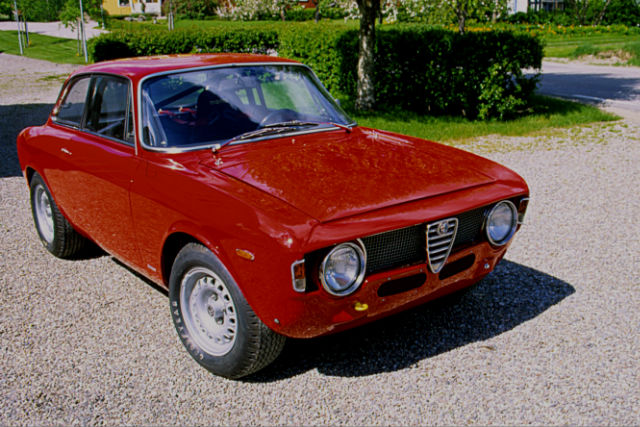
The new Giulia is set to be something of a watershed product for Alfa, which it’s hoping will reset its once-revered reputation for building some of the best-handling cars anywhere in the world.
Alfa’s return to form is echoed by the return of the Giulia name, which first belonged to a lightweight sports saloon released by the marque all the way back in 1962 as an attempt, just like the new model is, to broaden its customer base.
Arguably the car to make Alfa Romeo a household name worldwide, the original Giulia was one of the first road cars to experiment with the concept of matching a powerful engine with a light-weight chassis.
Renowned not just for its lively performance, which was better than many dedicated sports cars of its era, and its superb handling, the original Giulia was also admired for its classic Italian design and aerodynamic efficiency. Clearly, then, the new version has a lot to live up to.
The jaw-dropping design
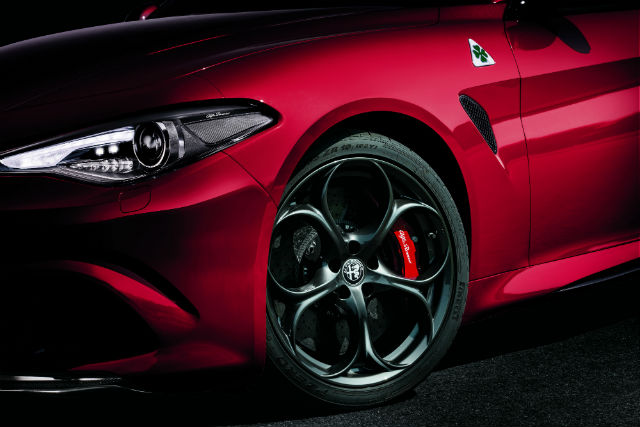
While the Giulia’s direct predecessor, the 159, was a handsome car in its own right, the Giulia sports a more modern and much more ambitious appearance with muscular flanks and swooping headlights.
Those classic Alfa traits are still there with the triangular front grille, but even standard models get big flared wheel arches, large front air intakes and twin exhaust tailpipes at the rear.
The range-topping Quadrifoglio version takes things a step further, with a large front splitter and bonnet vents, along with larger wheels, a rear diffuser and a quad exhaust.
It’s not often even something like a BMW M4 gets made to look like a wallflower, and that’s not all it has to worry about either, given that Alfa claims that every Giulia model has 50/50 weight distribution for Bimmer-rivalling handling.
The nerdy engineering details
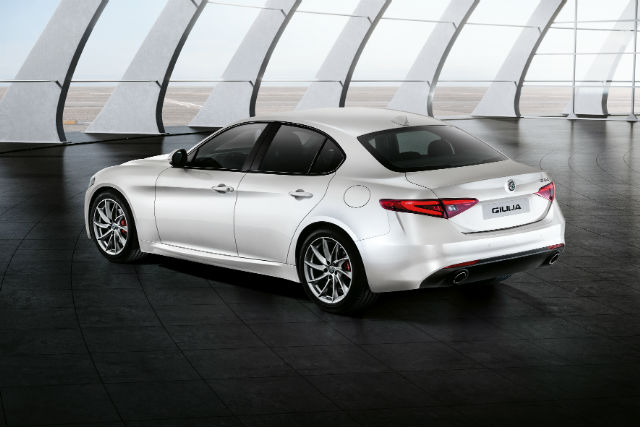
As well as that, Alfa claims that the new Giulia is the lightest car in its class, with all models getting a carbon fibre driveshaft and extensive use of aluminium throughout the entire car.
The mid-range diesel model weighs in at a tiny 1,449kg with all the fluids topped off, making it 26kg lighter than the 3 Series and the Jaguar XE, and a substantial 270kg lighter than the porkiest C-Class.
Alfa has also raided its composites closet even more for the Quadrifoglio, which gets a carbon fibre bonnet, roof and spoilers, which keeps its dry weight down to just 1,524kg even with its larger engine.
As a result, it’s got a power-to-weight ratio of 335bhp per tonne for M3-bothering pace. It’ll be nimble on its feet too, with a steering ratio claimed to be more direct than any of its rivals and a four-arm multi-link suspension setup as standard across the range. Phew.
The engines
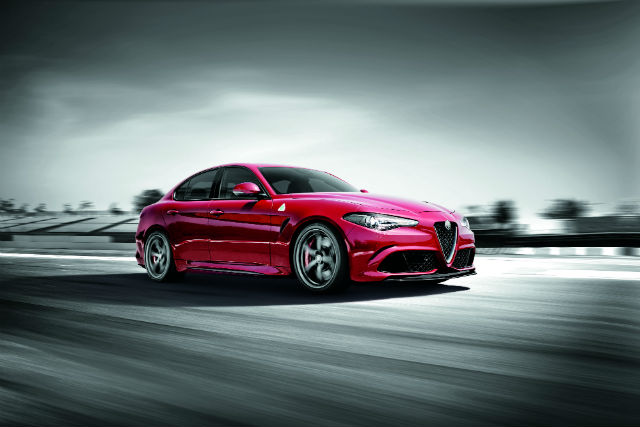
Four engine options will be offered, starting with a 2.2-litre inline-four turbocharged diesel engine which is available in two states of tune. The entry-level output is 148bhp, while a more powerful 178bhp version is available and both come with either a six-speed manual gearbox or an eight-speed dual clutch auto.
Sitting in the middle of the range is a turbocharged inline-four petrol engine, with a 2.0-litre displacement and a maximum output of 197bhp, again available with either a manual or automatic transmission.
Finally, the range-topping motor is a twin-turbo 3.0-litre petrol V6, which has been developed by Ferrari exclusively for the Quadrifoglio and is based on the same engine used in the Ferrari 488. Maximum power clocks in at 507bhp, while an overboost function delivers a massive 600Nm of torque with the throttle pinned.
As a result, the Giulia Quadrifoglio is capable of ripping from 0-62mph in just 3.9 seconds before hitting a top speed of 190mph, while even the entry-level diesel is capable of hitting 62mph from a standstill in just 8.2 seconds.
All Giulia models are also available with either rear-wheel drive or four-wheel drive, which marks a departure from recent Alfa models and, according to company bosses, marks a return to building driver-oriented cars.
The Nürburgring lap time
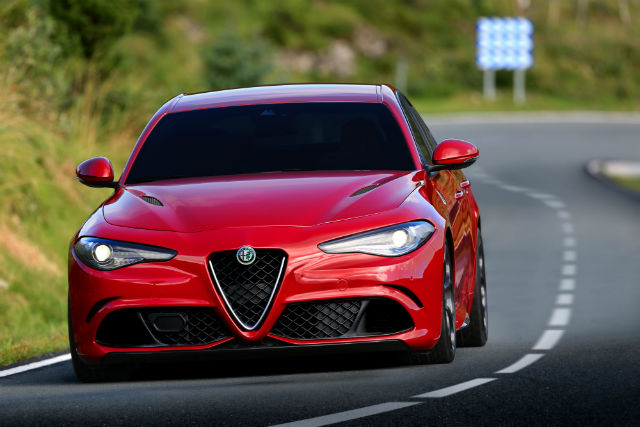
Stop for a second and count to 14 seconds. One, two, three, four and so on until you reach 14. That’s how many seconds quicker the new Alfa Romeo Giulia Quadrifoglio is around the Nürburgring’s Nordschleife track than the BMW M4.
According to the manufacturer, the Quadrifoglio set a lap time of just 7:39, smashing the fabled sub-eight minute mark and making it potentially the fastest saloon ever to grace the track if the results can be verified.
It’s not just the M4 that it has beaten, either. If the lap time is correct, then the Giulia is faster around the Nordschleife than a Lamborghini Murcielago, Nissan GT-R, a Chevrolet Camaro ZL-1 or a Mercedes C 63 AMG Black Series.
In other words, this thing doesn’t just have those classic Alfa Romeo looks, it’s got serious amounts of power to back it up and it goes like absolute stink to boot.
The specs and equipment
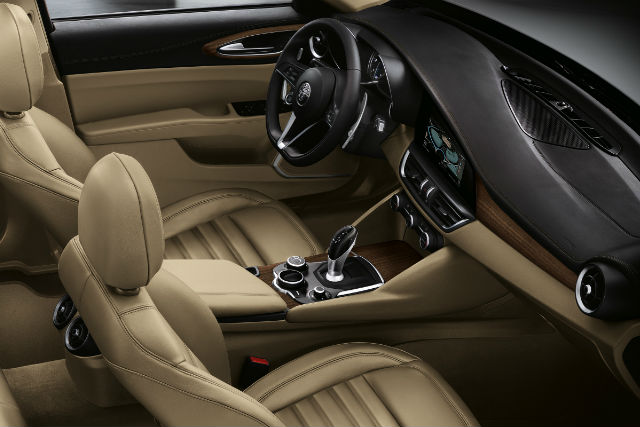
The new Alfa Romeo Giulia will be available in three distinct trims, starting with the entry-level Giulia, followed by the mid-spec Super, and culminating in the top-of-the-range Giulia Quadrifoglio.
Entry-level models get 16-inch alloy wheels as standard, along with dual-zone climate control, cruise control and LED rear lamps, plus a 6.5-inch touchscreen infotainment system and lane departure warning.
Opting for the Super trim adds full-grain leather upholstery, electric heated seats and wood interior trimming. Super models also get an optional sports pack which adds touches like a sports steering wheel, aluminium trimmings and xenon headlights.
Finally, the Quadrifoglio gets 19-inch alloys and carbon fibre sports seats, along with leather and Alcantara trim, a sports steering wheel and ceramic brakes. Xenon headlamps are standard as well, along with a roided-up bodykit and Alfa Romeo’s Chassis Domain Control function to manage engine response, suspension setup and the active aero parts.
The prices and delivery dates
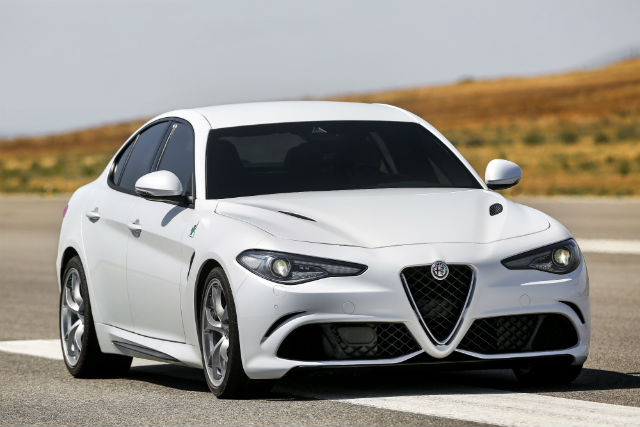
Official UK prices for the Giulia have yet to be confirmed, but in Italy it will start from €35,500, which translates to around £28,000 for the basic Giulia Available.
The more powerful diesel and petrol models will cost just north of £30,000, while the Quadrifoglio model is expected to command a price tag of around £63,000, meaning it could be pricier than the M3 or the upcoming Audi RS 4.
Originally, the Giulia Quadrifoglio was supposed to launch late last year, with the regular Giulia expected to arrive in Europe this March. However, a number of production setbacks regarding safety testing have pushed back production significantly.
However, it’s widely reported that both the Quadrifoglio and the regular Giulia models are now officially in production, and are expected to arrive in dealerships later this year.



